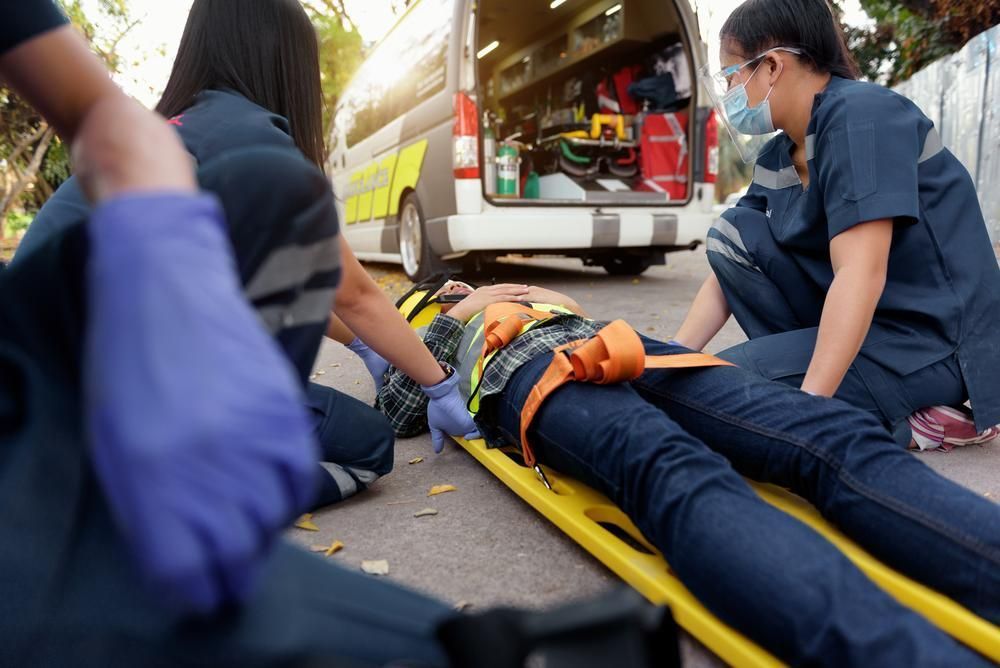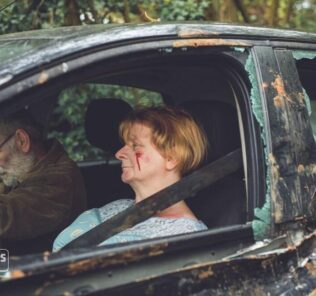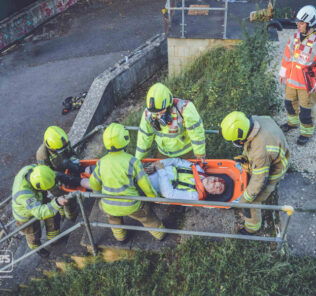Using Casualty Simulation for Realistic First Aid Training
Healthcare Simulation allows adult clinical learners to gain knowledge and train skills by doing, which is especially true for Gen Z learners. First aid education is a topic where remembering key procedures, skills, questions, timing, steps and mnemonics may literally mean the difference between life and death. Failure to be able to call upon learned knowledge can result in poor execution of patient care, which could lead to death. This begs the question: Why is first aid taught with a low-effort approach didactically, when research shows that lectures are inferior for teaching many skill-based topics? This HealthySimulation.com article written by Jill Sanko, PhD, APRN, CHSE-A, FSSH, will explore how casualty simulation can teach and train realistic First Aid skillsets through the application of the Experiential Learning Theory.
Experiential Learning Theory
For many healthcare topics assimilation of knowledge through active processes is vital for retention of materials and the future ability to apply the knowledge in action. As simulationists, experiential learning theory (ELT) is a foundational educational pedagogy. ELT is a constructivist learning theory defined as learning by doing. ELT posits that learning occurs best when learners are active in the process and assist to direct their education. Based on ELT knowledge acquisition is completed through a continuous cycle of inquiry, reflection, analysis and synthesis.
Sponsored Content:
What is Casualty Simulation?
Casualty simulation (CS), is the skill of portraying injury or illness in the most realistic way. To the educator CS can be a powerful addition to first aid training. To the learner, CS is an opportunity for hands-on learning by doing in a realistic environment of pressure and uncertainty. Currently, basic life support certification (BLS and CPR) is a two-step process that consists of a learning phase (either in-person or on-line) and a manikin-based skills practice.
A first aid course do not use this same approach.
First aid courses are quite varied, from an in-person option replete with the opportunity for manikin-based practice, while others are an on-line only course with ‘instant’ certification. This model may have some deficiencies to prepare learners for the real world. Is there any way that the training can be improved to ensure the learners are prepared in the best way possible? The answer, in short, is yes and can be summed up in a single word – simulation.
Sponsored Content:
View the HealthySimulation.com LEARN CE/CME Platform Webinar Addressing Female Casualty Care Disparities Through Medical Simulation to learn more!
How Does Casualty Simulation Makes a Difference?
The focus on CS as a whole concept is key that requires time to research realistic and up-to-date scenarios that are relevant to the learners first aid trainingt. In this way, simulation becomes a fulcrum for change and can be used to bolster first aid training. Simulation-enhanced first aid training can be used to develop skills, improve knowledge, and bring learners out of their comfort zone. This displacement from their comfort zone can then be leveraged to enhance learning, improve retention of knowledge and increase the possibility that the correct treatment will be rendered in a real-world setting when critically needed.
Scenario 1: An Unconscious Casualty
Without casualty simulation: A story is presented and learners are stepwise guided through the process of administering first aid to an unconscious victim and putting them in a recovery position. In some cases this may also include role play or a case study activity at a table. Learners are able to talk through how care might be rendered.
With casualty simulation: Exemplar A: A victim is portrayed by a member of staff or another learner, is lying in the middle of the floor space (or other simulated environment). When moved into the recovery position, the learner’s hand remains by the face and the casualty rolls with ease into the correct position. In this version of training learners get some interactivity that is more lifelike than a case study but does not get the full ability to benefit from doing the procedure and experiencing life in action from an unknown party.
Exemplar B: The casualty is portrayed by a person unknown to the training group. The victim is found lying next to chairs, or other objects, with ‘snoring’ breathing sounds. The victim cannot maintain any position and their head may flop to one side if moved. The victim becomes dead-weight when rolled into the recovery position; limbs do not stay placed in a specific position. In this version of learners get the interactive real-life feedback of observation of the results of actions and the ability to benefit from doing the procedure as well as progression of a situation that requires critical thinking and decision-making in a lifelike setting.
Scenario 2: Laceration to an Arm
Without casualty simulation: A story is presented and learners are stepwise guided through the process of achieving hemostasis in a bleeding injury. In some cases this may also include role play or a case study activity at a table. Learners are able to talk through how care might be rendered.
With casualty simulation: Exemplar A: A learner portrays the casualty patient and walks doubled over in ‘pain’ into the room with fake blood and moulage representing bleeding from a 3 cm laceration. The patient is screaming hysterically, reluctant to be treated by a first responder. A learner leaves the scene briefly and returns with a first aid kit. When a bandage is applied forcibly there is little change in the patient’s demeanor, but when care in the form of psychological care and physical care the patient responds by calming down. Learners are able to glean learning from a colleague playing the role of a lacerated patient.
Exemplar B: An unknown individual walks into the room in obvious pain, their hand and body posture are protecting a simulated laceration which is actively bleeding. The simulated patient portrays someone in pain, frustrated and upset about the cause of the injury (evidence of a broken cup, sharp object or other item lies nearby). During treatment, the patient’s face winces as expected and they sound out their pain. Learners here are able to respond to the simulated patient’s pain, frustration, and attend to their wound care needs while experiencing patient appropriate responses to their efforts.
These examples provide a few depictions of the distinctions between first aid training with and without the aid of realistic casualty simulation. One can see the learning opportunities to be witexperienced in both approaches However, the simulation-based one utilizes humans and manikins to provide a superior learning opportunity.
Benefits for First Aid for Participants:
- Improved communication skills between injured patients and learners
- Improved communication and handover skills between other first responders and
The learners - Increased confidence in the use of first aid kits
- Exposure to simulated injuries or illnesses in real life situations
- Better casualty handling and care
- Confidence in the use first aid skills with an unknown patient
Benefits for the First Aid Trainers and Training Organizations:
- More interactive training sessions for the learners
- A better learning experience
- Improved training course reviews
- More unique and varied courses allows for training tailored to typical patients
Educators must realize the impact of casualty simulation can make when properly used. When training opportunities are based on experiential learning theory, high-quality training occurs that can lead to better outcomes for the learners and future patients that require casualty care.
Learn More About Casualties Union!
Jill Sanko is an award-winning PhD-prepared nurse scientist. She began her research career as a research nurse at the National Institutes of Health (NIH). During her almost decade of service at NIH, she worked in several capacities including as support research staff and as an associate principal investigator. She was also integral in establishing the NIH Clinical Center’s simulation and patient safety program. In 2008 she moved back to Miami where she joined the University of Miami first at the Center for Patient Safety and later at the School of Nursing and Health Studies where she continued teaching and researching the impacts of simulation-based education on patient safety.
With over 40 publications in these areas and numerous national and international presentations she has helped to build the body of knowledge in using simulation as a technology to improve patient safety and has been recognized for these efforts including authoring two Articles of Influence, induction into the Academy for the Society for Simulation in Healthcare, recognition as an INACSL -Frontline Simulation Champion, and a Breakthrough Learning Hero of Healthcare Simulation. Currently, she is a contributing faculty member at Walden University and an Adjunct Associate Professor at MGH-IHP.
Sponsored Content:

















